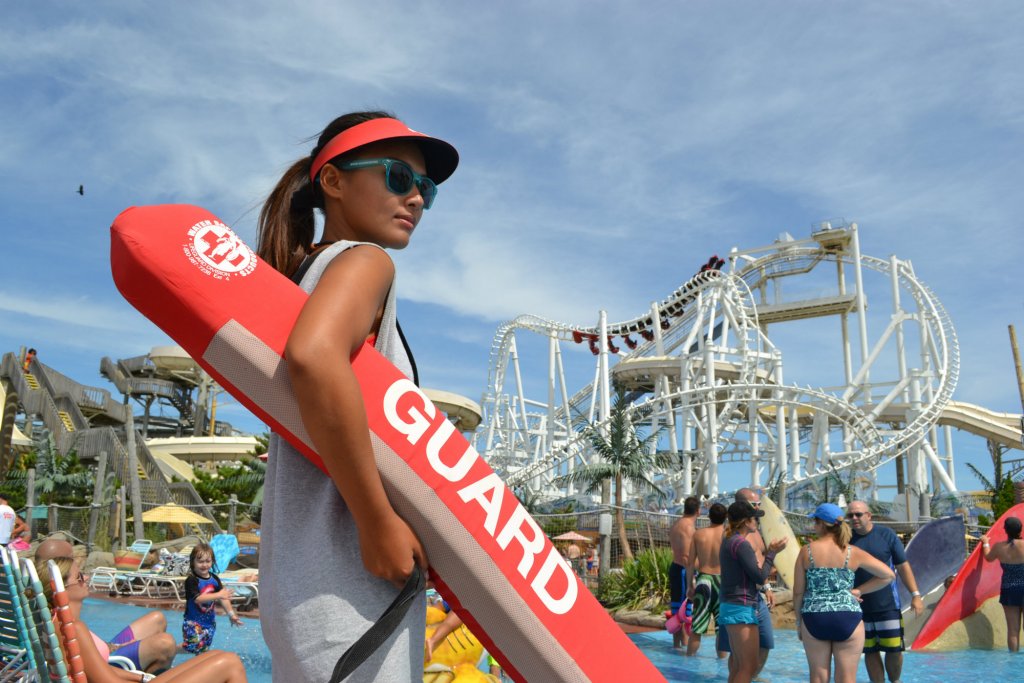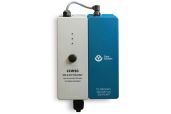Before each season, it is common for waterpark operators to conduct emergency action plan drills with their teams to ensure that staff are well-equipped to perform quickly and appropriately in the event of a true emergency.
To kick effectiveness up a notch, consider coordinating with your local emergency medical services team to conduct a joint drill. Emergencies require that all responding agencies work swiftly and as seamlessly as possible to provide prompt victim care.
This article dives into the best practices of planning a collaborative emergency drill, preparing staff to perform well and retain the information, and evaluating the plan’s effectiveness.
Plan the drill
As a first step, the parties should define what constitutes a successful response.
This requires a fully documented emergency action plan that lists step-by-step actions for each responding lifeguard. As an operator, you are most qualified to do this: You know your facility best and can pinpoint some of its unique lifeguarding challenges.
Plan what type of scenario you would like to run. It should not be too complicated, but should include CPR so staff can see firsthand how tiring it is to perform until EMS arrives.
Once you select the scenario, make it as true to life as possible. The use of fake blood, wounds and fluids helps prepare your team for the gore of a real emergency. (A tip: Alka Seltzer and clear soda imitates a foaming mouth flawlessly, although the eruption is immediate.)
Select a staff member to video record the drill. This is key for reviewing the drill with staff afterwards, plus you can post the clips via social media to assure the public that you place a high priority on safety.
Most fire departments are more than willing to collaborate on a simulated emergency drill. Before the drill, meet with the captain who will be on duty. Discuss your desired outcomes and explain that you would like their feedback on 9-1-1 caller performance, victim placement, team communication, and anything they feel will improve their ability to provide care once they arrive.
Work with the caption to make the initial 9-1-1 call as real as possible. This helps staff become familiar with the kinds of questions that 9-1-1 dispatchers typically ask. They also will learn the importance of remaining near the victim to answer the dispatcher’s questions.
Ask the captain about how to handle radio communication for the 9-1-1 call. Fire agencies have different preferences: Some like to create a separate line for staff to call, while others will ask the facility to call 9-1-1 directly. The latter group will warn their dispatchers in advance that your call is actually for a drill.
Ideally, the truck should dispatch from its normal firehouse so you can experience the average response time.
Also discuss with the shift captain the degree to which they will activate their services. Some fire departments have high-tech manikins that they can intubate, shock, etc. If they are willing to drop off the manikin ahead of time, staff can transfer from the human “water victim” to the manikin once they perform the extrication. This gives staff a more realistic view of the types of equipment EMS will bring on deck.
It is also important to pre-plan how far the simulation will go. Will they bring an ambulance to load the victim into, or will the drill stop on deck after a period of emergency care? Both are effective options and depend on the availability and willingness of local EMS services.
Prepare your staff
Even more important than planning with the Fire Department is adequately preparing staff to engage fully in the emergency drill.
Lifeguards should know the emergency action plan procedures to the point of muscle memory. This allows them to be more observant in the moment, increasing the likelihood that they will make appropriate judgments and decisions for providing care.
Since these drills generally take place pre-season, you’ll generally get better results by using seasoned lifeguards while the newer lifeguards act as waterpark guests. I often use my very seasoned guards who may have begun feeling invincible on the stand. This helps give them perspective.
On the day of the drill, pre-select a “victim” and arrange a signal that you will give to initiate the “emergency.” It does not have to be anything extreme — just a cough, laugh or tip of the hat will do. This works best when you select someone mature enough to keep their “victim” status secret until the appropriate moment.
Prior to the drill, set the tone with your team to ensure their conduct meets your expectations. Because the sounds and sights of an emergency can be uncomfortable, staff will have a tendency to try lightening the mood with jokes or chatter. Discourage this type of behavior: It is important that they directly experience the discomfort of these situations to better cement it in their memories.
In addition to the lifeguards, prepare management staff for their roles. You can pre-designate which managers should respond, or let their location at the time of the incident dictate. Pre-designation works well for newer management staff, but more seasoned managers should be able to respond and adapt according to the situation.
I learned about the importance of adaptability firsthand: During a soft opening of my first waterpark, I had a full-park evacuation and collaborative emergency drill planned. Operations were going smoothly and I was about 10 minutes from giving “the signal,” when I heard a whistle blast. There was no call over the radio, but repeated single whistle blasts.
Staff began to evacuate the attractions until we could determine where the emergency was occurring. About 3 minutes in, we determined that one of the lifeguards lost their whistle in the continuous river and a patron was sneakily blowing it every 30 seconds or so. We continued with the evacuation as planned, but it ended up being a test even for myself in operating with the unknown under pressure!
Post-Drill evaluation
Once the drill is complete, provide a few minutes for the team to independently process everything they saw and experienced.
Then come together as a group, including EMS personnel, to discuss how the drill was executed. Typically, EMS personnel will debrief first and give your staff compliments on their response, CPR and other things they noticed. Often, they will delve into specific care techniques that may or may not apply to your team’s standard of care or level of training. Sometimes you can avoid such a situation by discussing this with the shift captain ahead of time, but it usually happens anyway. There are many different training providers for CPR, and EMS personnel usually have different techniques that they employ.
Give your team the opportunity to ask EMS personnel questions. Sometimes the best suggestions for revised procedures come from these conversations. For example, some EMS agencies make it a policy to transport only their own backboards, because most aquatic backboards are too wide for their vehicles. They have requested that, if the victim is breathing, we hold them in the water until EMS personnel arrive. Other agencies have asked that a representative from the waterpark follow the ambulance to the hospital to retrieve the backboard.
Once EMS personnel leave, it’s time to dig in deep with your team. It is important to acknowledge those on the rescue team. Give them an opportunity to discuss how they felt during the rescue, while providing care, and when EMS arrived. Make sure to loop back with staff on your procedures and expectations for care according to your training provider. Often, team members feel a bit shaken because the drill seemed so real, with the sirens, equipment, and all eyes on them. Ask the rescuers for their positive and negative feelings on the drill, followed by the rest of the team’s positive and negative comments.
End the post-drill evaluation with your analysis, but keep it brief. The value of this drill is in the experience much more than the evaluation.
These drills can be conducted in any facility, from a single-pool aquatics center to a multi-attraction mega waterpark. All of us deal with the potential for a fatal emergency, no matter the size or scope of our facilities. Ensuring that we work well with other emergency personnel may be critical to the victim’s outcome when the unthinkable happens in your waterpark.



